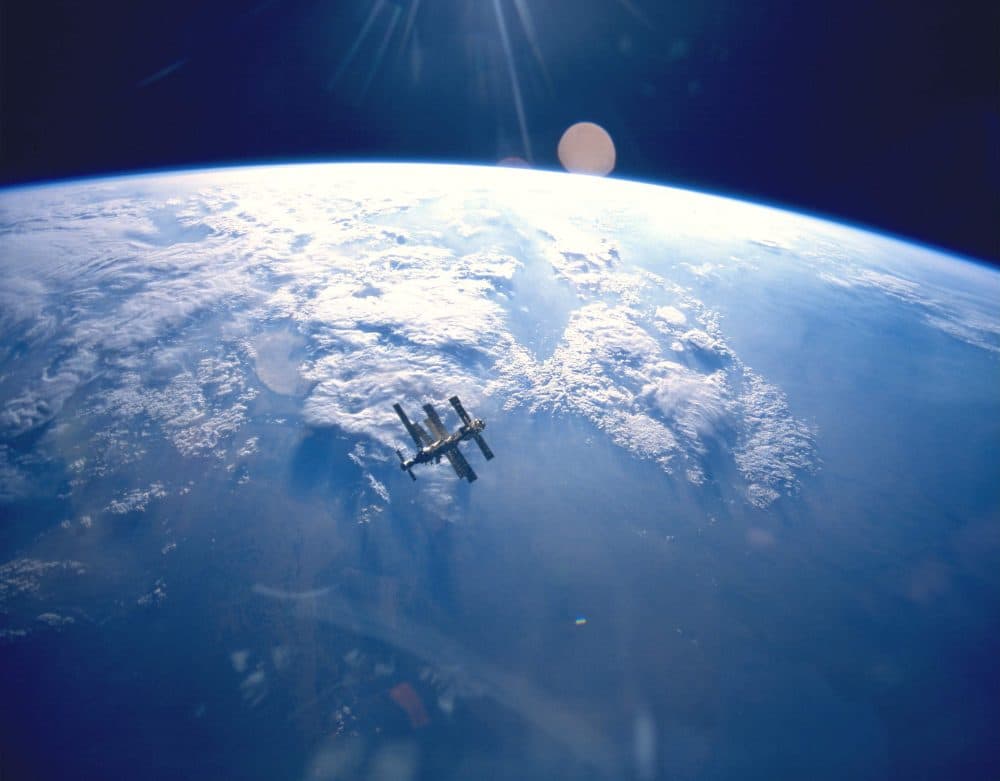Advertisement
Where Do Space Stations Go When They Die?
Resume
To date more than 260 spacecraft have crashed in a part of the South Pacific between Chile, New Zealand and Antarctica sometimes called "the oceanic pole of inaccessibility" or "the spacecraft cemetery."
Here & Now's Peter O'Dowd speaks with Holger Krag, head of the European Space Agency's space debris office.
Interview Highlights
On what to expect from Tiangong-1's re-entry
"The mass of the spacecraft is 8 1/2 tons. A good rule of thumb from past re-entries is that 20 percent of the mass could survive the really harsh conditions during the atmospheric re-entry, and then touch ground. We should not imagine this like the impact of a meteoroid — a meteoroid will punch a crater into the ground. Here we rather have fall-off fragments that just fall with a terminal velocity of what everything falls with, about 300 kilometers an hour. And that's not enough to punch a crater. So we will find, if you're lucky, we will find stuff lying on the ground. More likely it will be in water and never be seen."
On how the "graveyard" works
"Most safety standards ask not to do these kind of uncontrolled re-entries, where you cannot precisely predict where they will fall, but to do controlled re-entries. That means, as long as you have control over the spaceship and you have enough fuel, there is some sort of end-of-life maneuver performed ... big enough and controlled enough such that the trajectory of the spacecraft will end up over the South Pacific Ocean. And that's an ocean area that is the largest area of the world that is unpopulated. So it is about 3,000 times 2,000 kilometers long. So that will make sure that all fragments — even though fragments, even in a controlled re-entry, can fall over a long distance, 1,000, sometimes 2,000 kilometers. But this ocean area is so large that even the frequent trail of such re-entries will fit inside."
On what it takes to get spacecraft to land in this part of the ocean
"You need to have an engine that is capable of performing really large maneuvers. You can fire the engine, and that's really a big burn that you have to do — 20 minutes, sometimes 30 minutes of thrusting — to bring the orbit down in such a way that the trajectory ends up on the surface of the sea. And only by this you can ensure that the spacecraft will fragment over this unpopulated area."
On what else is at the bottom of the ocean there
"We find five European cargo ships of 20-ton mass, so much, much more heavy than the Chinese space station. They have been dumped there in a controlled fashion as well. And beyond that you find many, many, many other larger spacecraft."
On whether the debris poses an environmental risk
"I had never really had anybody expressing concerns over this. I think the concern to have people injured is much larger. We have been analyzing, though, what kind of potentially toxic material we would leave behind. So most of the things are aluminum, carbon-reinforced plastics, stainless steel, that will not do really harm to nature. There is of course fuel, hydrogen, that is toxic. But we know from experience and calculations and even observations that first of all, tanks should be empty after the maneuver. But even if they are not, we found that in the upper atmosphere, they would explode and the hydrogen would burn up with the oxygen in the atmosphere to products that are not toxic."
This article was originally published on November 20, 2017.
This segment aired on November 20, 2017.